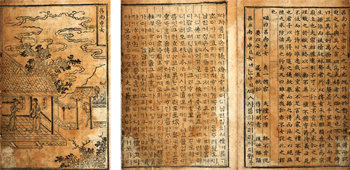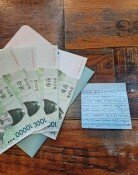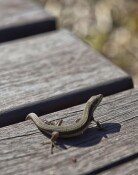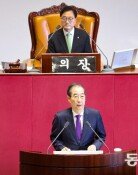Joseon Dynasty story to be designated as national treasure
Joseon Dynasty story to be designated as national treasure
Posted October. 08, 2015 08:03,

These days, ethics and rules among women have become disorderly and almost disappeared. However, it is difficult for working class people and wives to learn from Samgang Haengsildo (Illustrated conduct of the three bonds) because they are manners and practices of several special people. I hope that the government translates into Korean, for example, Yeolnyeojeon (Faithful Womans Story), which is most desperately needed in daily living and publish and distribute it.
This is a suggestion by Hongmungwan, which managed books and scriptures and served as advisory organization for the king during the Joseon Dynasty. King Jungjong replied, Thats absolutely right. Have it implemented. This is record of episode dated June 27 in the 12th year of the King Jungjong (1517) era in Joseon Wangjo Sillok (Annals of the Joseon Dynasty). At the time, Joseon was experiencing ethical crisis in society, and hence a plan was set to translate and distribute Yeolnyeojeon from China as a countermeasure. The story was originally written by Liu Xiang (776 B.C.) in the Han Dynasty and was mixed with stories written by many Chinese writers later on, and is a literature novel like "Samgukji Yeonui (the Romance Of Three Kingdoms)," which includes fiction stories. The book addresses life of various women in Chinese history, including sacred women and malign women. Records on episodes in the fourth year (1404) of King Taejong in the Joseon Wangjo Sillok suggest that Joseon imported 500 copies of Yeolnyeojeon from the Ming Dynasty of China.
"Yeolnyeojeon" written in Korean in the 16th Century, which was only known to have existed according to literary records, has been discovered ahead of Hangeul (Korean Alphabet) Day on Oct. 9, and will be designated as treasure.
The National Hangeul Museum said on Wednesday, We have acquired Eonhae (Korean language) edition of ancient Yeolnyeojeon from the early Joseon Dynasty, and are taking steps to designate it as treasure. Eonhae refers to a Korean translation of an original Chinese book.
The book is comprised of 40 pages, and measures 20.5 centimeters wide and 31 centimeters long. It also includes as many as 13 drawings that describe stories in details. Every episode in the book comes with drawing, followed by Chinese text and Korean text together.
The book was translated in 1543 by writers Shin Jeong and Yoo Hang, who were famous for their great writings, and written by calligrapher Yu I-son. The drawing by artist Goh Gae-ji (344-466) in the Chinese edition "Yeolnyeojeon" was redrawn by Lee Sang-joi, who was known as genius painter in the King Jungjong era. For the Korean edition Yeolnyejeon, the highest caliber figures of the time participated in publishing, because it was translated and published at the instruction of the king, said Park Cheol-sang, an ancient literature researcher. It is a publication that is representative of the time in the level of translations, writings and paintings.
There is also an interesting episode regarding Yeolnyeojeon from Joseons royal family. In the Joseon Wangjo Sillok, King Sejong says, "I instructed one to teach Yeolnyejeon to Ms. Bong. But then, she committed such unruly behaviors, and how can her behaviors be appropriate in light of duty and responsibility as a daughter-in-law." When his crown princes second wife, Sunbin Bong, enjoyed drinking and engaged in homosexual behaviors, King Sejong had instructed her to read "Yeolnyeojeon" to develop ethical standard based on Neo-Confucianism.
When policy was proposed to translate Yeolnyeojeon, which had been read in the palace, into Hangeul and distribute it to ordinary people, the royal family of the Joseon Dynasty started translating the book through the Gyoseogwan, a national publishing agency, in 1543 (38th year of the King Jungjong era).
The book was discovered for the first time at art auction in 2013, and was auctioned off for about 20 million won (17,300 U.S. dollars) to Kim Yeong-bok, an expert in ancient art. Kim provided the book as historical records to a research team at Sunmoon University, and the book was found to be an "original copy with high value" in the course of research.
Then, the National Alphabet Museum persuaded Kim and bought it for 70 million won (60,000 dollars). Korean materials of the mid-Joseon era of the 15th and 16th centuries are very rare, Curator Goh Eun-sook at the museum said. We will translate into contemporary language and publish a book in November.
zozo@donga.com






